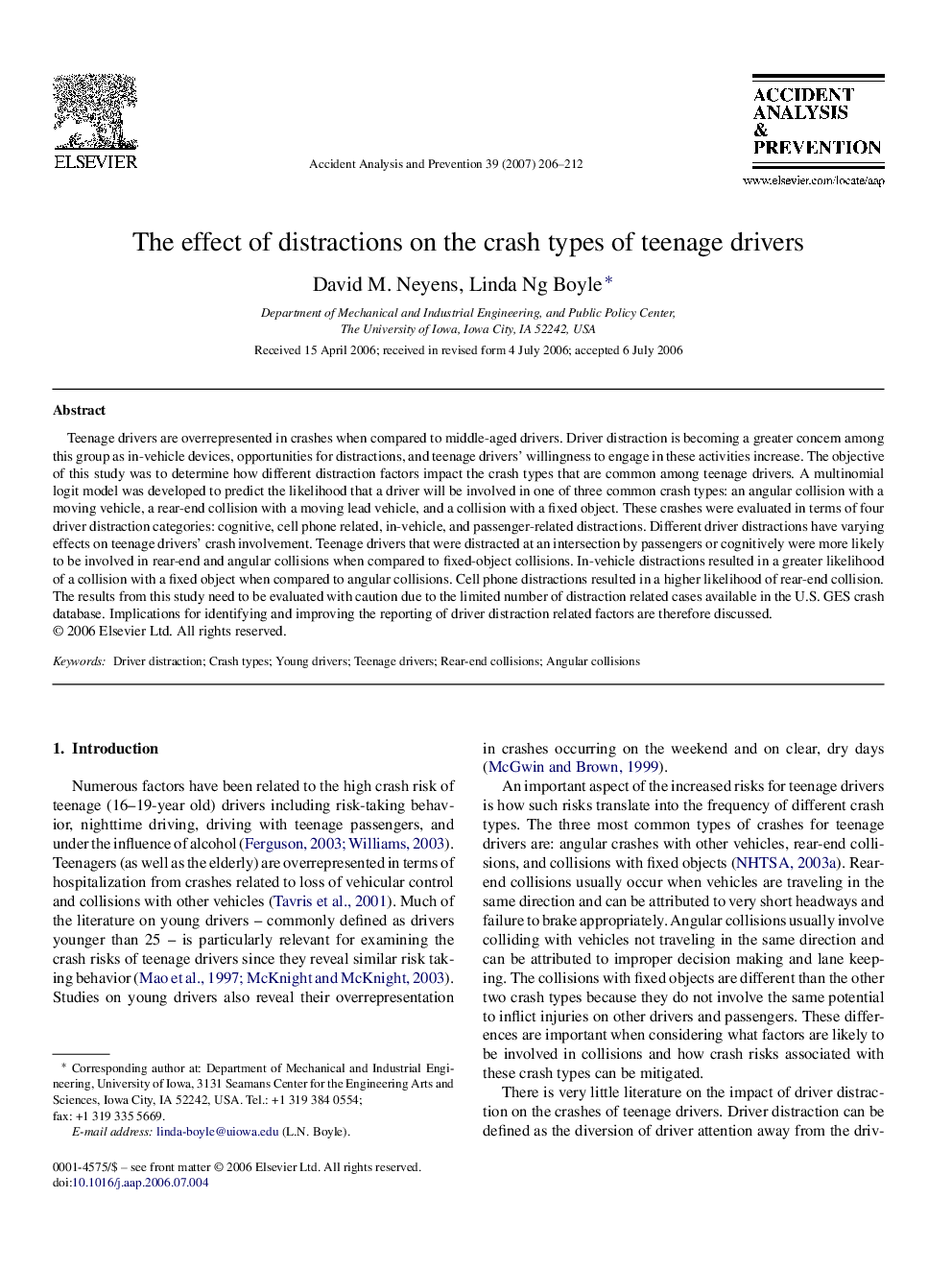| کد مقاله | کد نشریه | سال انتشار | مقاله انگلیسی | نسخه تمام متن |
|---|---|---|---|---|
| 573585 | 877403 | 2007 | 7 صفحه PDF | دانلود رایگان |

Teenage drivers are overrepresented in crashes when compared to middle-aged drivers. Driver distraction is becoming a greater concern among this group as in-vehicle devices, opportunities for distractions, and teenage drivers’ willingness to engage in these activities increase. The objective of this study was to determine how different distraction factors impact the crash types that are common among teenage drivers. A multinomial logit model was developed to predict the likelihood that a driver will be involved in one of three common crash types: an angular collision with a moving vehicle, a rear-end collision with a moving lead vehicle, and a collision with a fixed object. These crashes were evaluated in terms of four driver distraction categories: cognitive, cell phone related, in-vehicle, and passenger-related distractions. Different driver distractions have varying effects on teenage drivers’ crash involvement. Teenage drivers that were distracted at an intersection by passengers or cognitively were more likely to be involved in rear-end and angular collisions when compared to fixed-object collisions. In-vehicle distractions resulted in a greater likelihood of a collision with a fixed object when compared to angular collisions. Cell phone distractions resulted in a higher likelihood of rear-end collision. The results from this study need to be evaluated with caution due to the limited number of distraction related cases available in the U.S. GES crash database. Implications for identifying and improving the reporting of driver distraction related factors are therefore discussed.
Journal: Accident Analysis & Prevention - Volume 39, Issue 1, January 2007, Pages 206–212